Pruning shears
Vine pruning is essential to regulate the production and vigour of the plants. Most pruning used to be carried out manually, but nowadays electric pruning shears are used for greater efficiency. Modern pruning shears feature sophisticated cutting heads, advanced motors, compact batteries and versatile control boxes, making pruning work much easier.

Work objective
Pruning involves controlling the development of the vine in order to regulate fruit and wood production, as well as vigour. This work is generally carried out manually. Most pruning shears used today are electrically assisted.The first electric pruning shears were developed by INFACO in the late 1980s. Since then, this equipment has continued to develop, offering ever greater power, comfort and lightness.
Components of pruning shears
The cutting head
Made up of a blade and a counter-blade held in place by a bolt, it must be serviced every day to maintain good cutting quality while limiting mechanical stress. Some cutting heads are fitted with grease nipples to make greasing easier.Arvipo has developed an atypical cutting head equipped with radial and axial ball bearings. Daily maintenance is as simple as sharpening the blade.
Pellenc uses a surface treatment that makes lubrication of its EVOLUTION II cutting head a weekly requirement.
Most manufacturers use a rack-and-pinion system to drive the blade. Pellenc, ARS and Felco use a ball screw and nut system.

Components of electric pruning shears
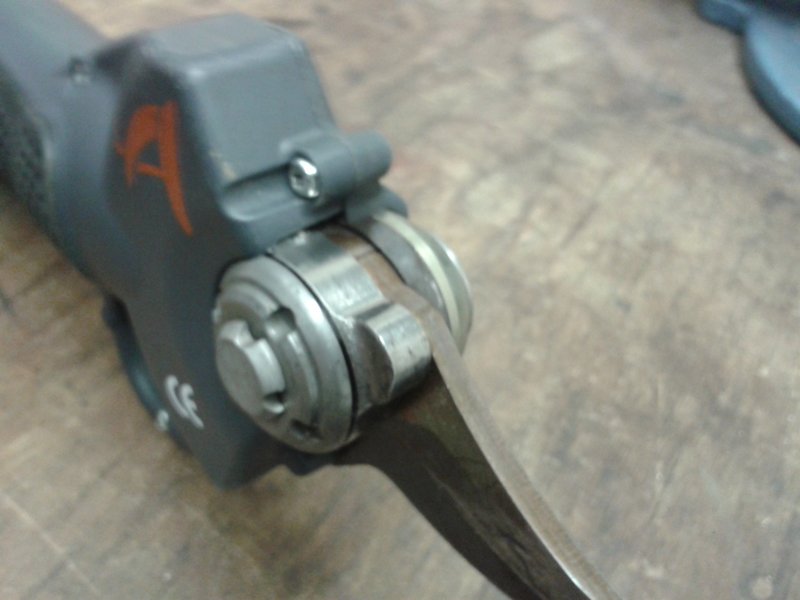
The blade holder

The blade

Electric pruning shears spare parts for maintenance
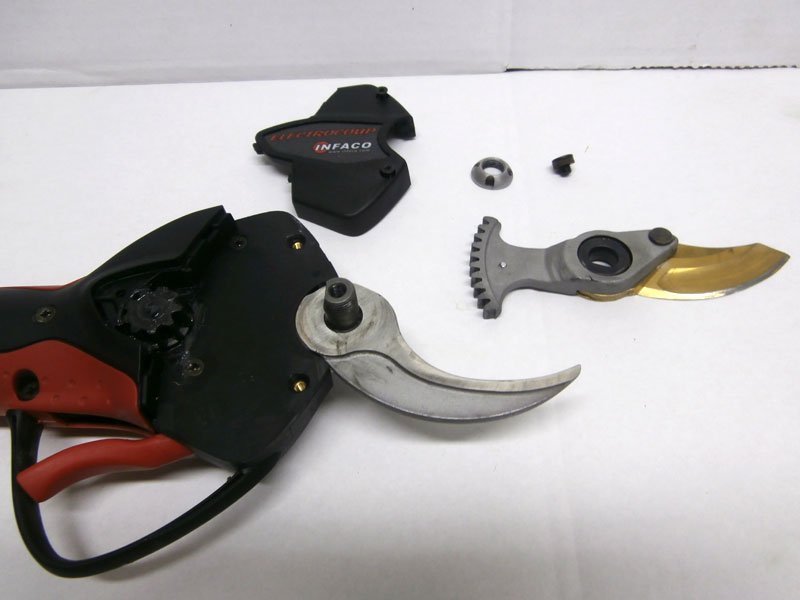
Maintenance spare parts for electric pruning shears
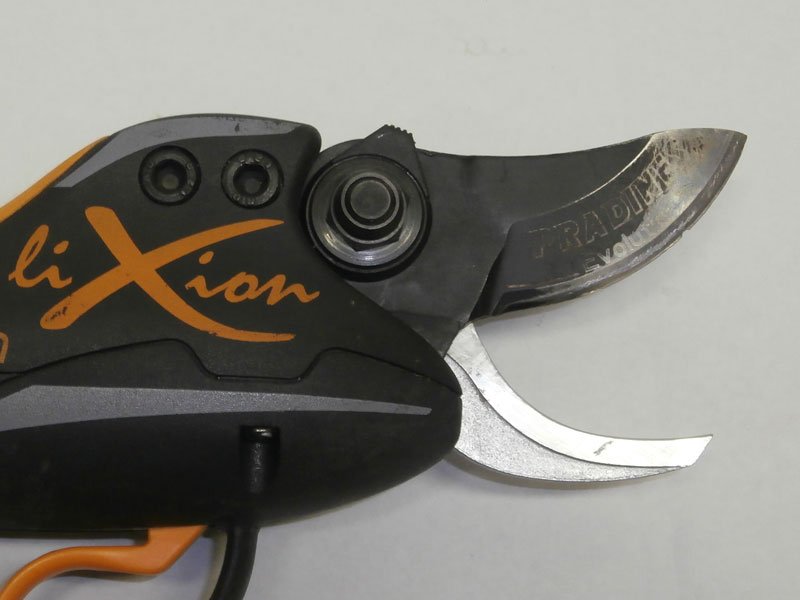
Photo of a Pellenc Lixion pruning shear
The motor
This is generally a conventional DC motor. Pellenc uses "brushless" motors, i.e. motors containing no rotating commutator and therefore no brushes (carbon brushes). This technology eliminates the disadvantages of conventional DC motors by avoiding all mechanical and electrical losses associated with brushes.The battery
Several technologies are available:- Nickel-Metal Hydride (NiMH) from Infaco, and Arvipo (ps 60)
- Lithium-ion (Li-ion) at Automax, ARS, Pellenc and Zanon
- Lithium-polymer (Li-po) at Felco
The accumulator and electronic box are integrated into a waistcoat. Felco offers the option of fitting the waistcoat with a second battery to extend its range.




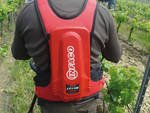
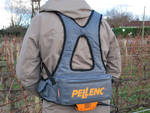

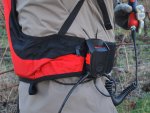
Photos of different brands of back battery for electric pruning shears
The control box
Electric pruning shears are generally fitted with a control box for controlling various functions. This box can be remote and fitted with an LCD display. For the simplest models, it displays the battery charge status. Felco and Infaco offer a wide range of information and settings that can be accessed from the box.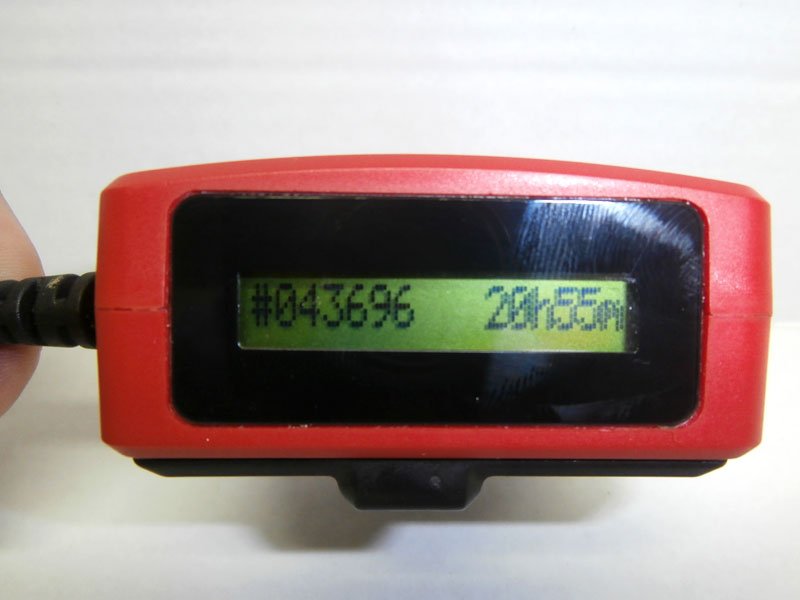
Control box for electric pruning shears
Adjusting and using the pruning shears
Different types of electric pruning shears are available on the market: simple pruning shears with no special features and more complex pruning shears with a wide range of functions and information.Some models have a remote control unit (independent of the battery) which can be used to carry out all the available settings, as well as providing a large amount of information (battery charge status, cutting statistics, percentage of blocked cuts, etc.).
The majority of pruning shears have a cutting head opening control , i.e. an intermediate opening (½ opening mode) which is used when cutting small diameters (cleaning the aste). Some manufacturers go even further, offering the option of impulse or progressive operation.
Finally, Infaco, Felco and Pellenc offer the option of modifying the crossing of the blade and counter-blade, which increases blade life.
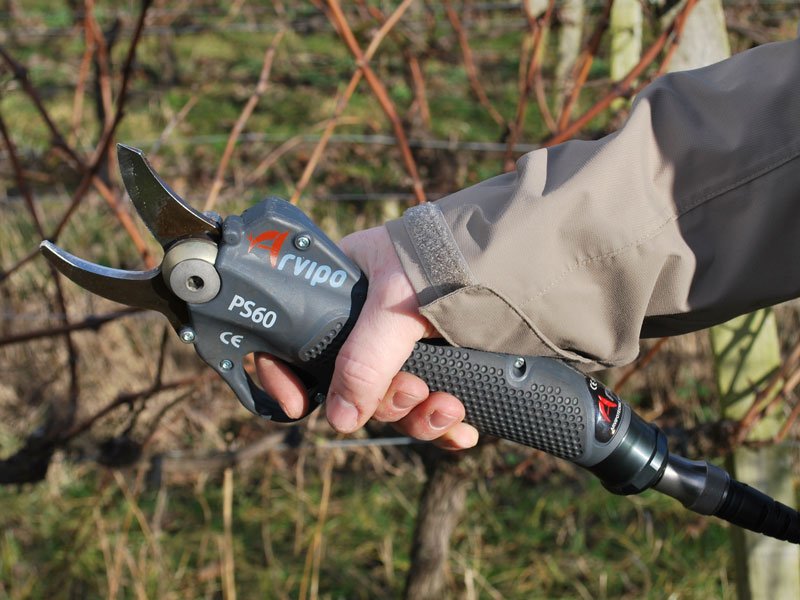
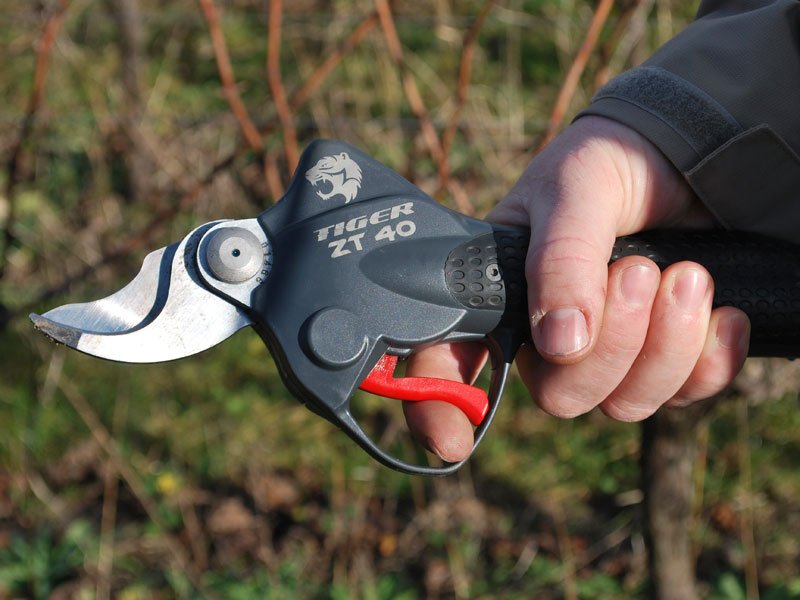
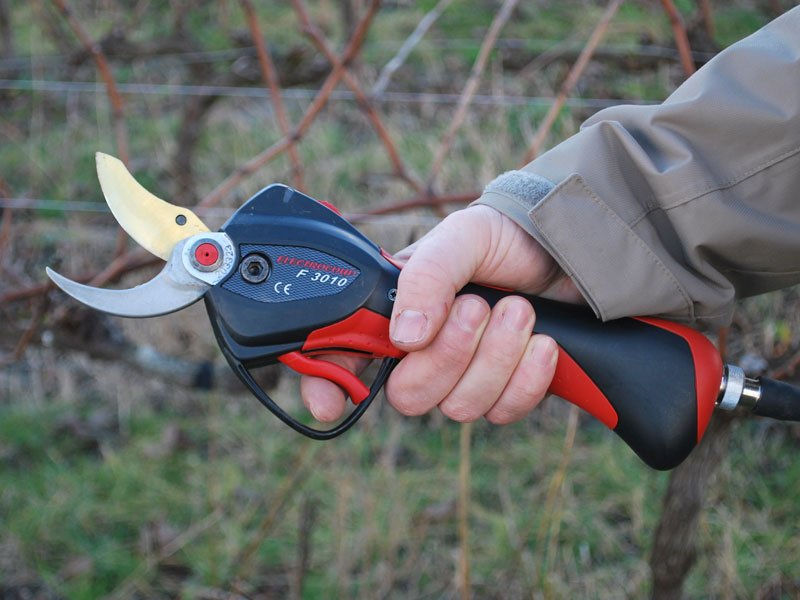
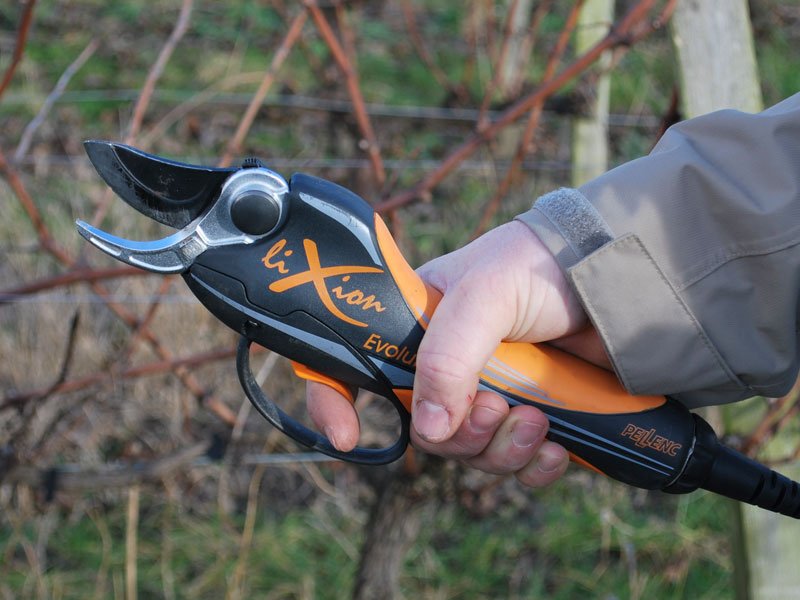
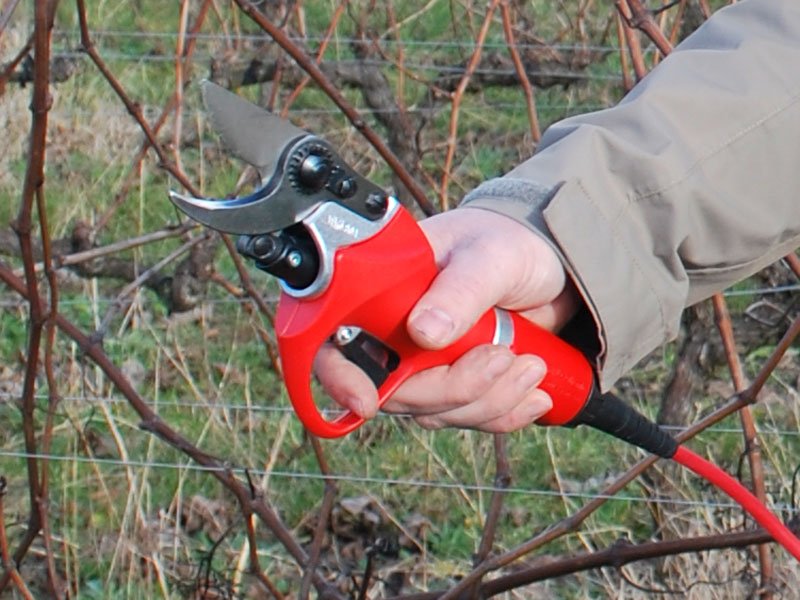
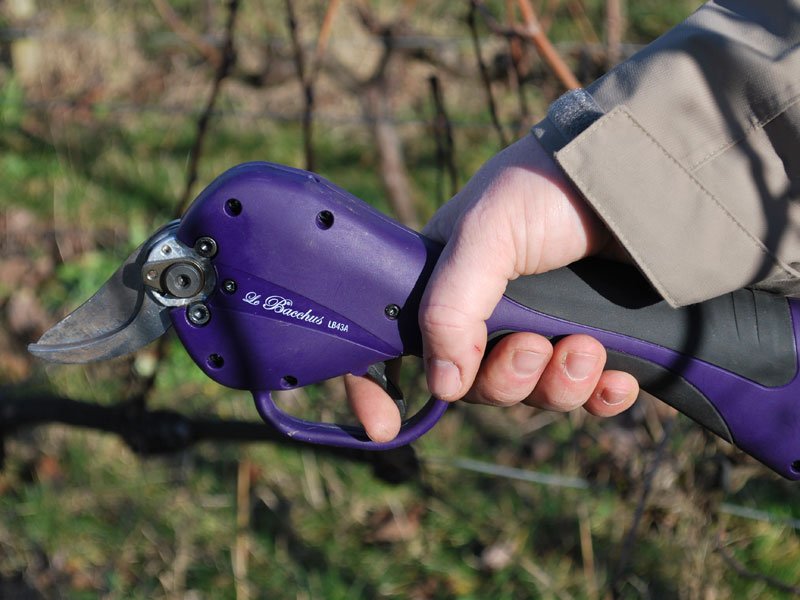
Sizeable tutorials, translated into 6 languages
Discover a series of videos produced by the Plan National Dépérissement du Vignoble and directed by StudioNyx. They are available in 6 languages (French, Spanish, English, Bulgarian, Romanian and Arabic) and are associated with 3 videos produced by the MSA on prevention and comfort at work.
Here is the list of videos available on the PNDV Youtube channel, in French, English, Spanish, Bulgarian, Romanian and Arabic.
- Why prune vines?
- Reading the vine
- The flow of sap
- The virtuous gesture
- Prevention before pruning
- Prevention during pruning
- The pruning shears
Experiment
See the list of experimentsSee more - [EQUIPMENT TEST] Comparative test bench, electric pruning shears - 2017
- [EQUIPMENT TEST] Comparative test bench, electric pruning shears - 2016
- [EQUIPMENT TEST] Vinion electric pruning shears - 2015
- Maintenance of electric pruning shears - 2014
- [EQUIPMENT TEST] Comparative test bench, electric pruning shears - 2014
